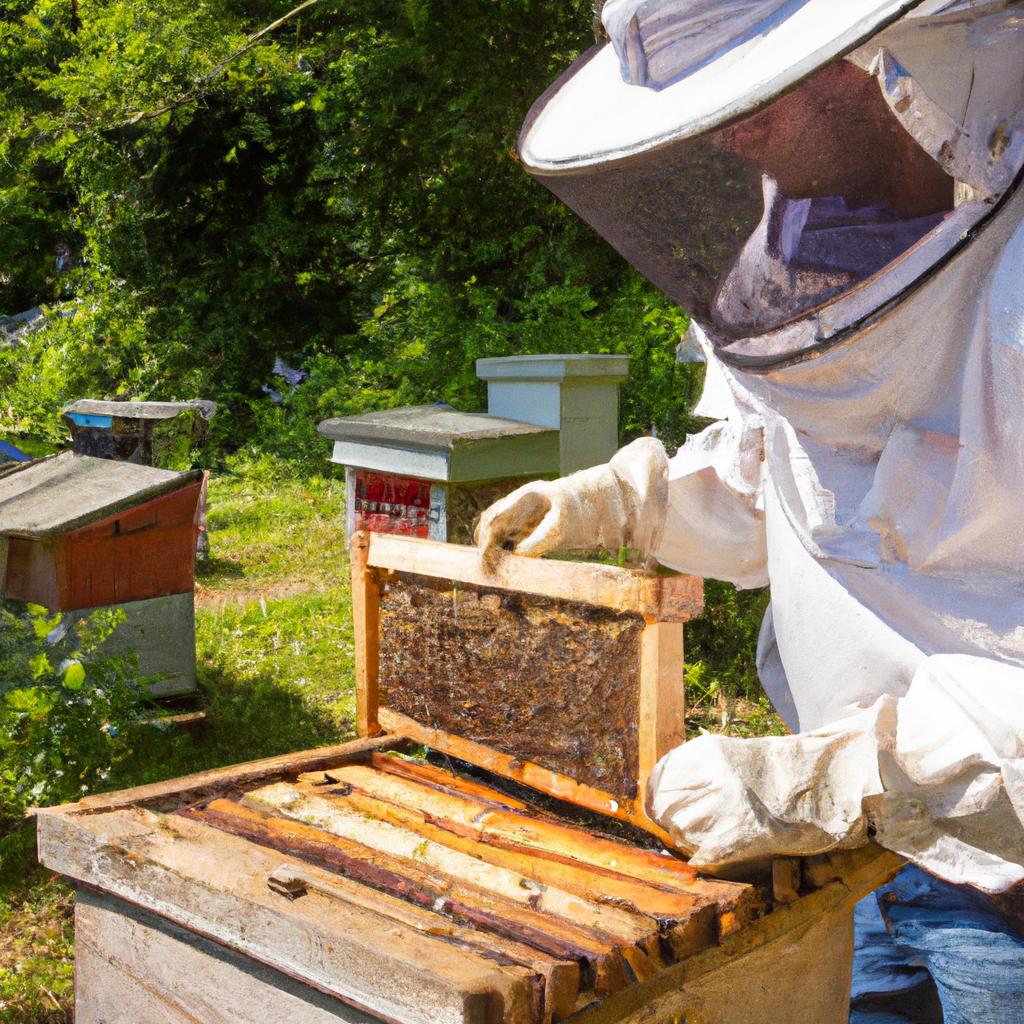Honey bees are beautiful creatures that play a significant role in our ecosystem. They are an essential part of pollination, which is crucial for plants and crops to survive. However, honey bees are also known for their ability to produce honey, which has been consumed by humans for centuries. But how long does it take honey bees to make honey? In this article, we will explore the honey production process, the factors that affect honey production, the timeframe for honey production, and the average honey production per hive.
Honey Production Process

Honey production is a complex process that involves several steps. The process starts with the collection of nectar from flowers. Honey bees use their long, tongue-like proboscis to extract nectar from flowers. They store the nectar in their honey stomach, which is different from their regular stomach.
Once the honey bee has collected enough nectar, it returns to the hive, where it regurgitates the nectar into the mouth of another bee. This process is known as trophallaxis. The second bee then regurgitates the nectar into another bee’s mouth, and so on, until the nectar reaches a honeycomb cell. The bees then fan their wings over the honeycomb to evaporate the water content of the nectar. Once the water content is reduced to around 18%, the bees cap the honeycomb with wax to seal it off.
The process of digestion, regurgitation, evaporation, and storage is repeated several times until the honeycomb cell is full of honey. This process can take several weeks, depending on the strength of the colony and the availability of flowers.
Factors Affecting Honey Production

There are several factors that affect honey production. The climate and weather conditions play a vital role in honey production. Bees are more active during warm weather, which means they can collect more nectar and produce more honey. The availability of flowers is another critical factor. Honey bees need a consistent supply of nectar to produce honey. If there is a lack of flowers, honey production will be reduced. The strength of the colony is also an essential factor. A strong colony with a lot of worker bees will produce more honey than a weak colony.
Factors Affecting Honey Production
As mentioned earlier, climate and weather conditions, availability of flowers, and the strength of the colony are all essential factors that affect honey production. Let’s discuss each of these factors in more detail.
Climate and Weather Conditions
Honey bees are more active during warm weather, which means they can collect more nectar and produce more honey. In colder weather, the bees tend to stay inside the hive, conserving their energy and honey stores. Extreme weather conditions like heavy rain, frost, or drought can also impact honey production.
Availability of Flowers
Honey bees need a consistent supply of nectar to produce honey. If there is a lack of flowers, honey production will be reduced. The type of flowers also affects the flavour and colour of the honey produced. Bees tend to produce honey with a distinct flavour profile depending on the type of flowers they collect nectar from.
Strength of the Colony
A strong colony with a lot of worker bees will produce more honey than a weak colony. A weak colony may not have enough bees to collect and process nectar efficiently, resulting in lower honey production.
Timeframe for Honey Production
Honey production is a time-consuming process that can take several weeks or even months, depending on various factors. Let’s look at the different stages involved in honey production and the associated timeframe.
Duration of Nectar Collection
The duration of nectar collection depends on the availability of flowers and the number of bees in the colony. In favourable conditions, it can take a few days to collect enough nectar to start the honey production process. In less favourable conditions, it may take several weeks to gather enough nectar.
Processing Time
Once the bees have collected enough nectar, they begin the process of digestion, regurgitation, evaporation, and storage. This process can take several weeks and involves multiple bees working together to create the honeycomb cells and evaporate the water content of the nectar.
Time for Storage and Ripening
Once the water content of the nectar is reduced to around 18%, the bees cap the honeycomb with wax to seal it off. The honey is then left in the honeycomb cells to ripen for a few days to a few weeks, depending on the type of honey produced. During this time, enzymes in the honey break down the sugars, making it easier to digest and giving it a distinct flavour.
Average Honey Production per Hive
The amount of honey produced per hive can vary widely depending on several factors. The size of the hive, the strength of the colony, and the availability of flowers are all critical factors affecting honey production per hive. On average, a healthy honey bee colony can produce around 30-60 pounds of honey per year. However, this amount can vary depending on the factors mentioned above. In addition, beekeepers must also consider the amount of honey that the bees need to survive the winter months.
Conclusion
In conclusion, honey production is a complex process that involves several steps, including the collection of nectar, digestion and regurgitation, evaporation, and storage. The length of time it takes honey bees to make honey can vary depending on several factors, including the strength of the colony, climate and weather conditions, and the availability of flowers. On average, a healthy honey bee colony can produce around 30-60 pounds of honey per year. Honey bees play a vital role in our environment, and their honey is a delicious and nutritious food source for humans. As beekeepers, it is our responsibility to protect and care for these beautiful creatures and ensure that they can continue to thrive for generations to come. Thank you for reading BeeKeepinglove.com’s article on “How Long Does It Take Honey Bees to Make Honey?”
